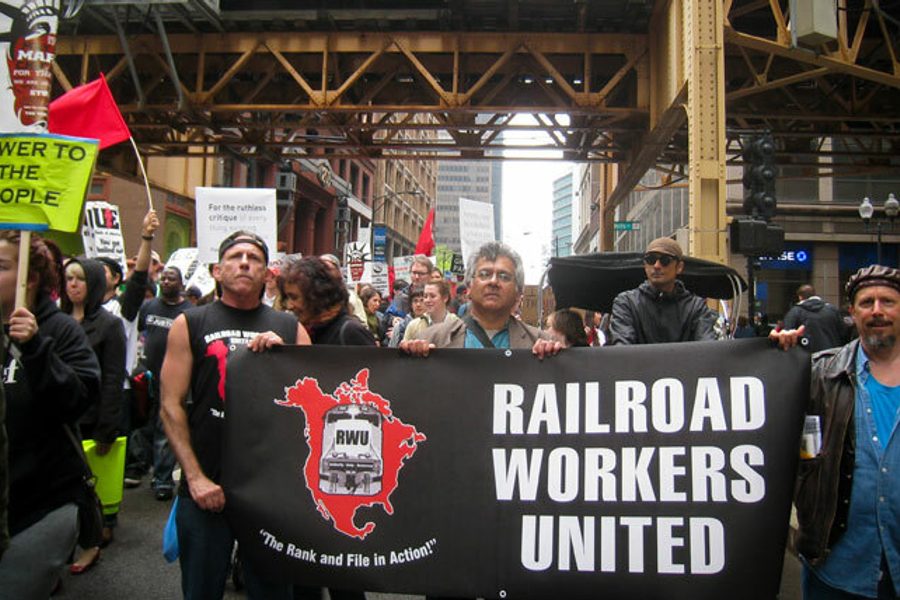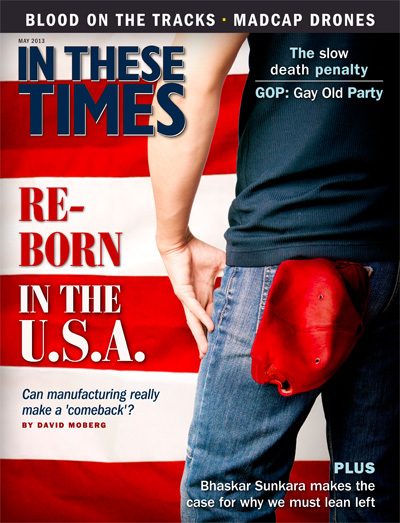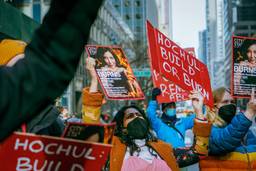
The 19th-century railroad boom enabled not only the settling of the American West, the industrial revolution and the growth of American cities, but also the creation of a new class of corporate owners. The railroad magnates of the 19th and early 20th centuries amassed such wealth and wielded such political clout that they seemed almost omnipotent. The 1886 U.S. Supreme Court case Santa Clara County vs. Southern Pacific Railroad Company is known as the first significant ruling to grant corporations the same constitutional equal rights protections as human beings.
In many ways, that sense of overwhelming corporate power has endured to the present, at least in major railroad companies’ relations with their employees. Railroad workers and their attorneys say — and federal courts and government regulators have agreed — that for decades there has been an endemic problem of retaliation by railroad companies against employees who are injured on the job or who speak out about safety hazards. Often the two issues go together: Injury investigations bring safety hazards to light.
Historically, the railroad industry had “a paramilitary mentality,” says Charlie Goetsch, an attorney who specializes in representing railroad workers. “In the army, if you refuse to obey an order, you’re shot or court-martialed. You do what I say or you’re fired or I make your life miserable. The workers had no power, no recourse to stand up against that. Railroad unions have been a powerful force, but they have had no ability to strike back when rail management retaliated against an individual employee for having the gall to report a safety hazard or a resulting injury. That continued on into the 21st century.”
But the industry may be in the early stages of a sea change, thanks to 2007 legislation protecting railroad workers that has been strongly backed by federal court rulings this year and complemented by policy changes and voluntary agreements involving the Occupational Safety and Health Administration (OSHA).
Blaming the victim
Railroad workers and attorneys say the railroad industry provides a prime example of a trend that has become prominent across multiple industries, from manufacturing to package delivery. That is the concept of “behavior-based safety,” wherein all accidents and injuries are assumed to be avoidable, and thus the fault of the worker. This approach is self-serving for employers in a number of ways. If the worker is theoretically to blame, it is easier (though not necessarily legal) for the company to refuse to grant workers’ compensation or other benefits. And the supposed misconduct on the worker’s part can also be used as justification for firing, so that employers don’t have to deal with injured workers.
Ron Kaminkow, general secretary of the group Railroad Workers United (RWU), which includes members of several railroad unions, explains: “If I fell off a locomotive, it’s in the interest of the rail carrier to show I was careless, or on drugs or alcohol. So when it goes to court, I have to prove that the carrier had created an unsafe workplace, and the carrier wants to prove, ‘No, we’re not liable — this worker didn’t follow these rules.’ We have a million rules for everything,” so it’s easy to find minor violations, says Kaminkow.
This approach creates a climate where workers are far less likely to report injuries since they suspect they will be blamed, disciplined or fired. That serves employers, who are mandated to pass on injury reports to the Federal Railroad Administration (FRA) — the U.S. agency that enforces rail safety.
“They want those numbers to be low,” says Kaminkow. “[So] in effect they are intimidating the rest of the workforce. Every time they fire Joe Blow who got hurt getting off an engine, people think, ‘Oh my god if I ever get hurt I better just limp home, lick my wounds, go to a hospital, just don’t report it.’ ”
Kaminkow’s depiction is borne out by a 2007 report by the U.S. House Committee on Transportation and Infrastructure, which noted, “The underreporting of railroad employee injuries has long been a particular problem.”
The report also cited a 2005 Transportation Department Inspector General’s finding that the FRA investigated less than two-tenths of 1 percent of reported accidents and incidents. “It’s absurd,” says a West Coast rail yard worker who was fired over what he says were trumped-up charges after reporting a safety hazard. Since his case is pending, he didn’t want his name used.
“Are all accidents preventable?” he asks. “Look it up in the dictionary, pal! That’s nuts. Human beings will be involved in accidents, especially in an industry as dangerous as railroads.”
Seattle-based attorney George Thornton frequently represents railroad workers. He says the companies are especially likely to fire or discipline “people who are vocal about safety complaints, who won’t just go along and get along.” Instead of blaming workers for their injuries, he says, companies should actually spend money to address safety problems that lead to accidents.
The Association of American Railroads, an industry group, did not respond to interview requests for this story. An OSHA spokesperson did not respond to questions or provide requested statistics on trends in railroad workplace injuries and whistleblower complaints.
Witness protection
The case of New Jersey railroad worker Anthony Araujo exhibits both the systemic problems with the industry and the hope offered by Congressional amendments made to the Federal Railroad Safety Act (FRSA) in 2007.
On February 25, 2008, Araujo was working as a conductor and flagman on a commuter rail track when he saw something that would change his life. A construction worker was fatally electrocuted: “a human being in flames, burning to his death,” as Araujo describes it today. Araujo went to a counselor employed by the railroad company, he said, and was referred to a trauma specialist who found he was suffering post-traumatic stress symptoms and would need time off from work.
After receiving the specialist’s report, New Jersey Transit Rail Operations charged Araujo with violating company electrical rules, according to Araujo, and to documents from OSHA and the federal court proceedings that resulted. (A spokesperson for New Jersey Transit declined to comment for this story.)
The company ceased paying Araujo’s wages, and he subsequently fell into debt, losing his car and his home to foreclosure and having his credit ruined. And more importantly, Araujo said, “I lost my job, my respect, my relationships.”
Araujo felt — and OSHA agreed — that he was blamed and punished for his own injury. He also sees himself as a whistleblower, since in the investigation of the construction worker’s death he described what he saw as safety hazards and problems with company process.
Araujo filed a complaint against New Jersey Transit with OSHA’s whistleblower protection office, saying that he had not been investigated or charged with a rules violation until after reporting his own work-related injury. OSHA ruled in Araujo’s favor and granted him more than half a million dollars, including attorneys’ fees and lost wages for the year he was out of work. He now works for New Jersey Transit again.
New Jersey Transit appealed OSHA’s decision. But Araujo had additional recourse, thanks to the 2007 FRSA amendments.
That legislation expands protections for railroad workers under the 1926 Railway Labor Act and grants the government much greater power to intervene in railroad whistleblower cases. Individual workers like Araujo are now allowed to bring lawsuits in federal court if they have not gotten results through the administrative process.
Since the 2007 FRSA, whistleblower complaints filed under the act have risen steadily, from 45 in 2008 to 353 in 2012. The number of settlements has accordingly gone up, although the great majority of claims (more than 80 percent in 2012) are either dismissed by the agency or withdrawn by the employee.
The 2007 FRSA also created other new protections for workers, including an explicit demand that railroad companies “may not discharge, demote, suspend, reprimand, or in any other way discriminate against an employee” for protected activities, including reporting safety hazards or a workplace injury or illness. The 2007 FRSA allows OSHA and federal courts to award workers compensatory damages, lost wages, job reinstatement, attorneys’ fees and punitive damages of up to $250,000 for violations.
So Araujo appealed to federal court and, this February, received a ruling that legal advocates see as clarifying and strengthening the 2007 FRSA. The court cited the long history of retaliation in the railroad industry: “The legislative history shows that Congress was concerned that some railroad supervisors intimidated employees from reporting injuries to the FRA, in part, because their compensation depended on low numbers of FRA reportable injuries within their supervisory area.”
Noting that people in Araujo’s position were never disciplined for the infraction of which he was accused, the appeals court overturned the lower court’s verdict that the company’s actions against Araujo were not retaliatory. But the higher court didn’t decide explicitly in Araujo’s favor, instead kicking the case back to federal district court.
However, since the appeals court emphasized Congress’s intent in strengthening railroad worker protections with the 2007 FRSA amendments, it was seen as an important victory for railroad workers.
Araujo’s attorney, Goetsch, wrote on his blog: “All railroad employees should take heart knowing that Congress and now the federal courts have declared that the FRSA must be liberally interpreted and applied so as to fully protect all employees who report injuries.”
The federal government had already sent signals that OSHA was taking the law seriously. In July 2012, the Federal Railroad Administration and the U.S. Department of Transportation signed a memorandum of agreement with OSHA elaborating on how the law would be enforced. The agreement laid the groundwork for increased cooperation between the rail administration and OSHA, which railroad workers think will mean more pro-active enforcement of the FRSA.
Meanwhile, in January OSHA announced that BNSF, the railroad majority-owned by Warren Buffett, had signed a voluntary agreement regarding alleged retaliation against workers injured on the job. The agreement included settlement offers (of undisclosed amounts) to 36 workers with pending whistleblower claims and the revision of BNSF policies regarding injuries and whistleblower complaints.
In a statement provided by BNSF, Mark Schulze, vice president for safety, training and operations support, said: “We are pleased to have voluntarily worked with OSHA in a cooperative and constructive manner to have clarified issues and look forward to continuing to work with our employees and the appropriate safety regulators to achieve our goal of a workplace free of accidents and injuries.
“These policies will continue to be valuable tools to hold employees accountable for rules compliance, focused on reducing exposure and eliminating at-risk behaviors.”
Endless appeals
Despite the 2007 FRSA and other positive developments, railroad workers and attorneys say there are still obstacles to workers feeling safe from retaliation when they report injuries or safety hazards. For one thing, a worker has only 180 days (six months) from the incident to file a complaint with OSHA’s whistleblower office. Some workers and attorneys say this time period is too short, since it often takes longer for workers to realize that they have legal recourse.
Railroad companies also have a right to appeal OSHA decisions to a federal administrative law judge. Attorneys and workers say major railroad companies make it a practice to do so. “The [2007] law is good and the Department of Labor is starting to do something about it,” said Thornton. “But the companies are engaging in scorched-earth litigation tactics — they refuse to pay anything, delay as much as possible, appeal everything, they fight every step of the way.”
“The railroads starve people out — there is an arbitration system to go through, but it works in such a slow way that no worker in a normal situation can afford to wait until the whole thing is over,” said the West Coast railroad worker who didn’t want his name used.
Steve Desavouret, a Chicago-area railroad worker fired by Canadian National Railway Company in relation to an incident involving a workplace injury, feels like the railroad “tried to take my life away” by appealing an OSHA ruling that he should get his job back.
“I’ve had some Teamster union activists sitting with their mouths open at some of the things rail bosses do,” he says, “things that UPS” — which has been targeted by a national Teamsters campaign around alleged blame-the-worker policies — “would not dare try to pull off.”
Public outrage
Since the 2007 FRSA was passed, increasing numbers of railroad safety cases have begun to reach the federal courts. Attorney Goetsch says that jurors in these cases are often aghast at the railroad industry’s practices.
“Within the industry this is a given, it’s the way it’s always been,” said Goetsch. “But people outside the railroad industry — the public — come in off the street, sit down in a jury, start learning about the railroad culture of retaliation and ignoring their own safety standards, and they become outraged. They don’t understand how any employer could fire someone for reporting an injury that results from a hazardous condition. Members of the public get that immediately, because it seems so bizarre and so wrong.”
Andrew Barati worked as a trackman for Metro-North, a New York/Connecticut commuter rail, when in April 2008 his left big toe was crushed as he lowered the load from a jack. The company disciplined and then fired him, saying the accident was his fault. Barati took his case to federal court and in March 2012 a jury decided that negligence by the company was in part responsible for Barati’s injury. The jury awarded him $1 million in punitive damages for his retaliatory firing — more than the amount actually allowed under the FRSA. (A spokesperson for Metro-North declined to comment.)
Goetsch said that the jury’s outsized award was an example of just how outraged many regular Americans are when they get a window into the inner workings of the railroad industry.
Many Americans see railroad safety — and by extension, labor issues — as affecting the larger society, too, since rail accidents and spills can be devastating for large numbers of people.
Goetsch hopes that growing public awareness will contribute to the willingness of federal officials to stand up for railroad workers, of Congress to support legislative protections and of workers themselves to come forward.
“I like to think of it as a battleship,” said Goetsch. “A battleship doesn’t turn on a dime. We’re in the middle-early stages of taking the wheel and turning it and holding it down. The railroads are starting to change course, the battleship is starting to move, but it’s not there yet by any stretch.”
Araujo knows that he still has a long road ahead.
“Even if I have a jury trial next year, it could still be 10 years before I have a final resolution,” Araujo said. “A lot of people see what happened to me and think, ‘I don’t want to go through that.’ But I’m proud to be standing up. It’s not about me. It’s about changing this culture of retaliation … so we can survive, stand up, make a difference, so it’s not just business as usual anymore.”
Kari Lydersen is a Chicago-based journalist, author and assistant professor at Northwestern University, where she leads the investigative specialization at the Medill School of Journalism, Media, Integrated Marketing Communications. Her books include Mayor 1%: Rahm Emanuel and the Rise of Chicago’s 99%.









